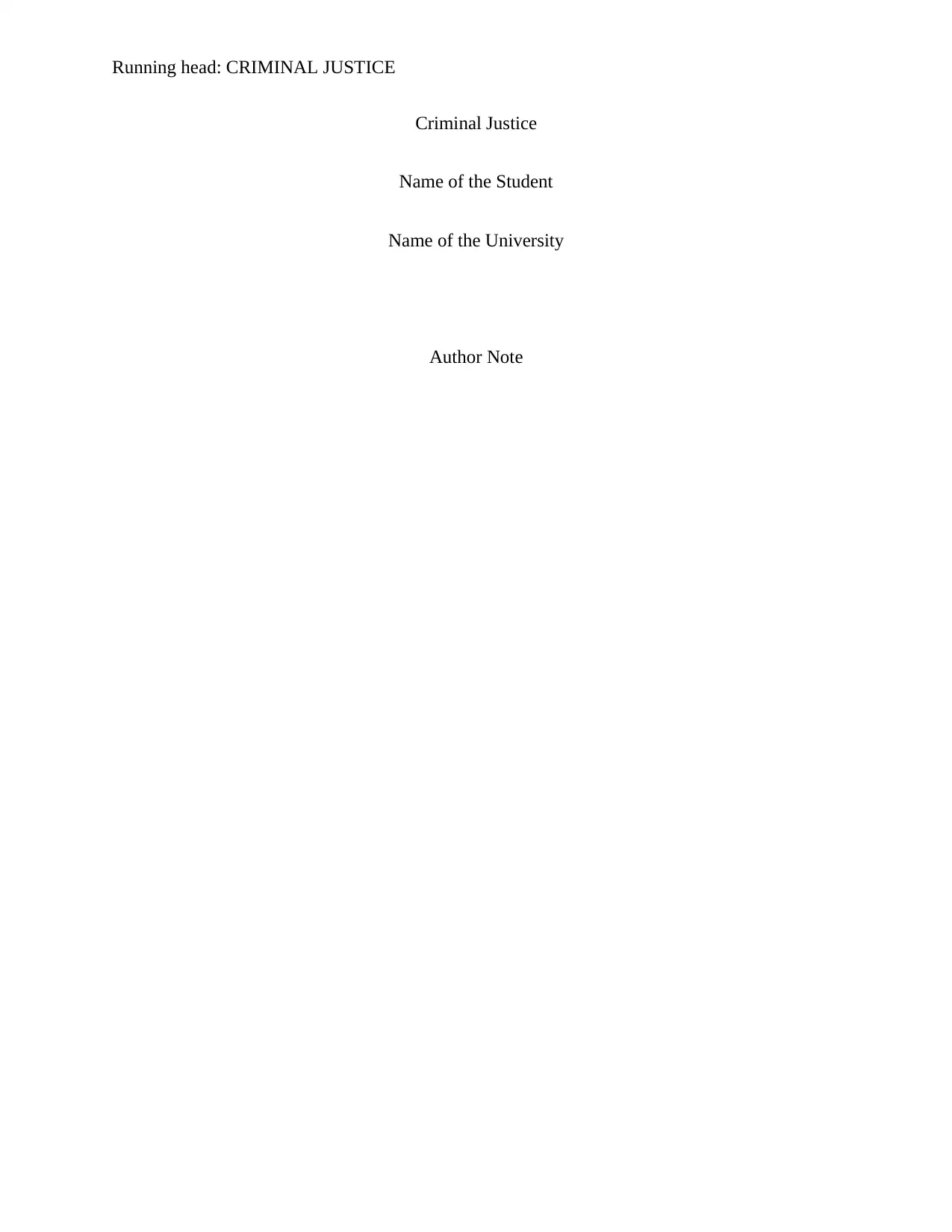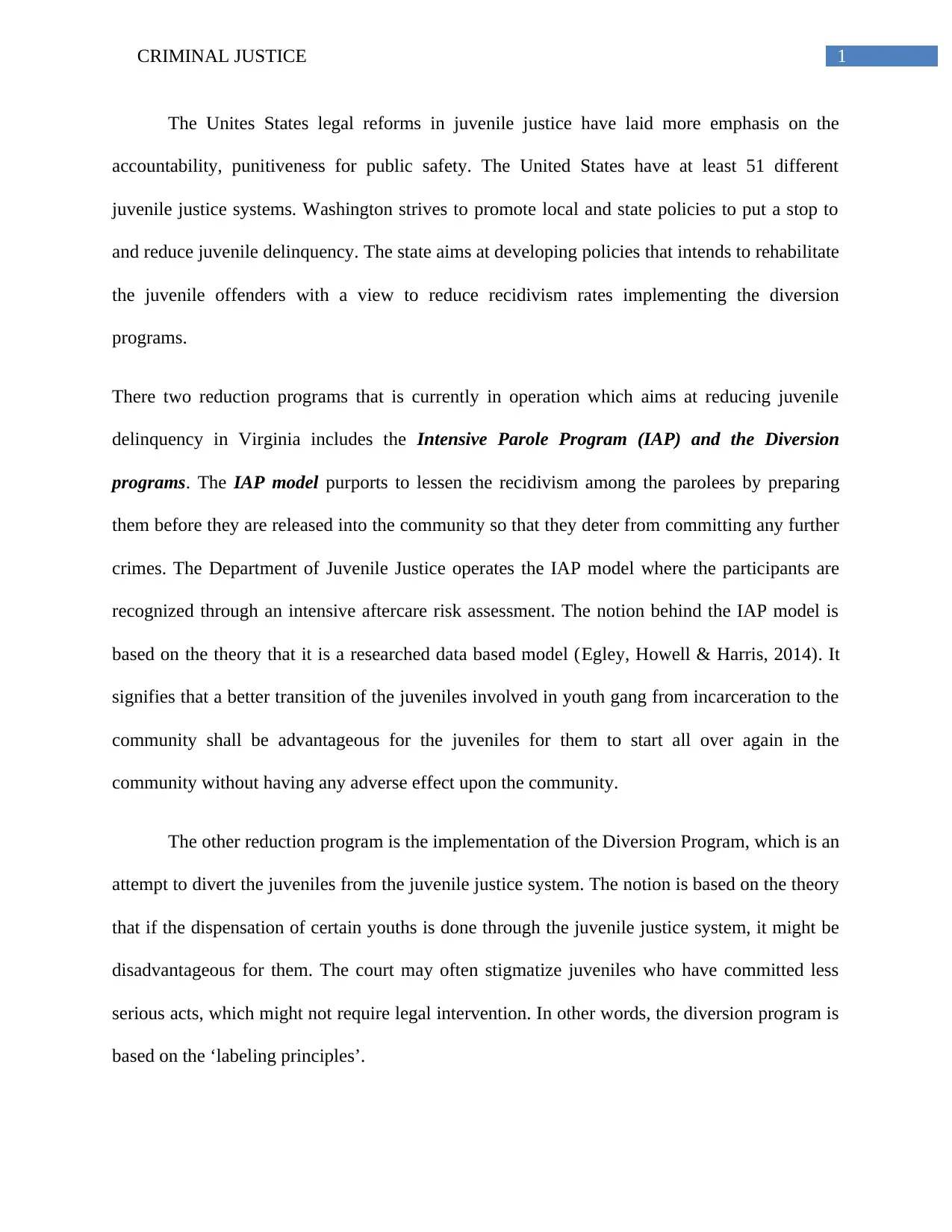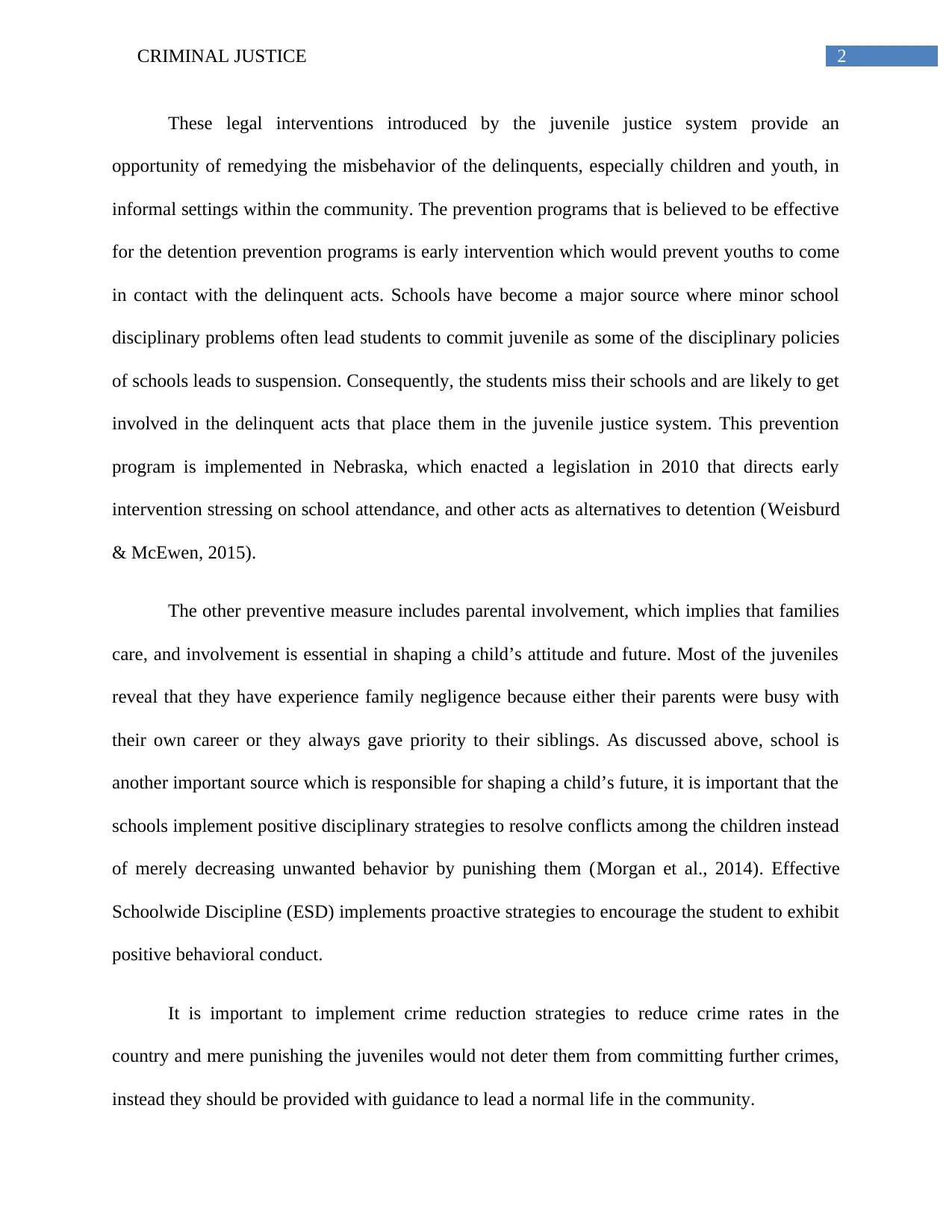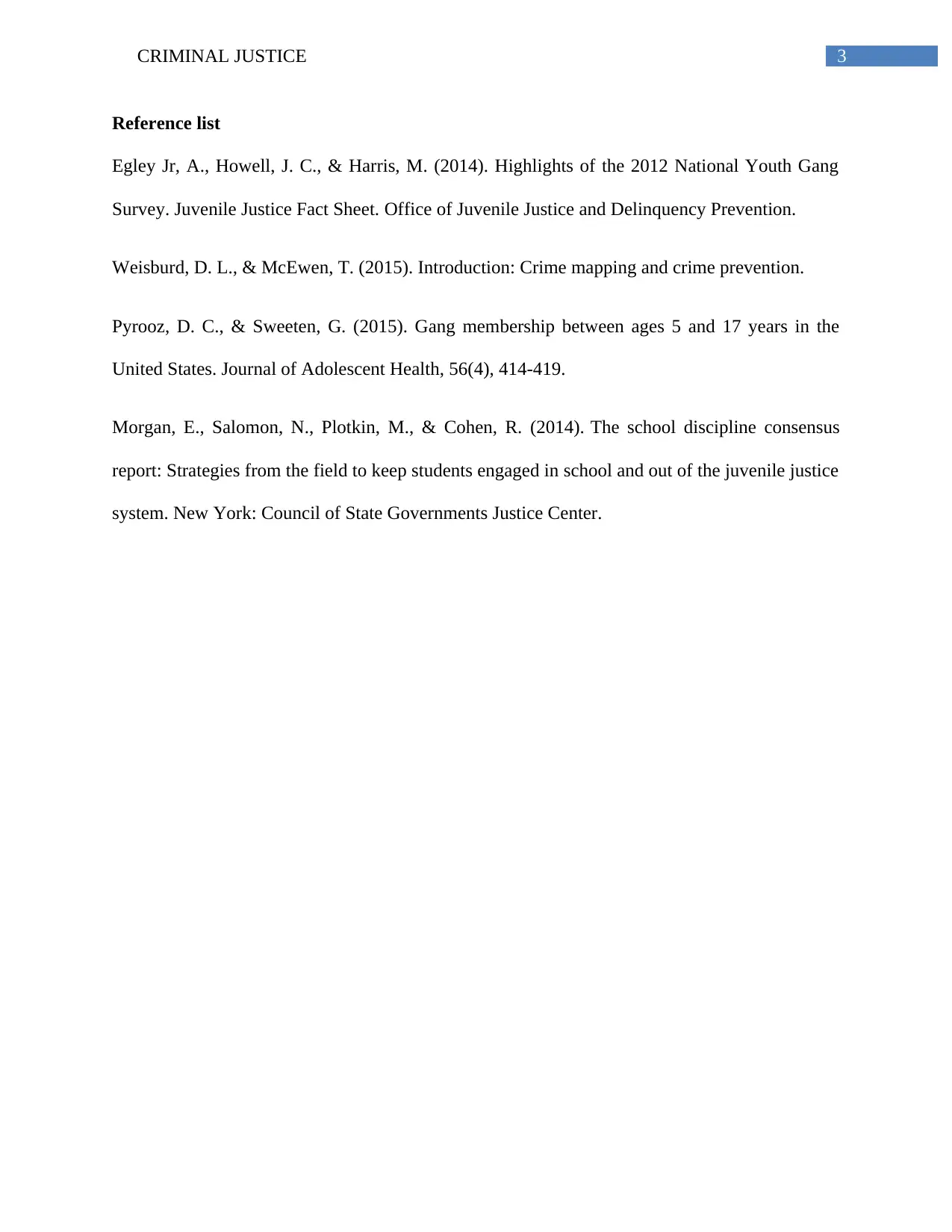Analysis of Juvenile Justice and Delinquency Reduction Programs
VerifiedAdded on 2020/03/01
|5
|826
|31
Report
AI Summary
This report examines juvenile justice in the United States, focusing on programs designed to reduce and prevent juvenile delinquency. It highlights the emphasis on accountability and public safety within the legal reforms. The report explores two primary reduction programs: the Intensive Parole Program (IAP) and Diversion programs, explaining their theoretical underpinnings and operational strategies. The IAP model aims to reduce recidivism through intensive aftercare, while Diversion programs seek to divert juveniles from the formal justice system. Additionally, the report discusses effective prevention strategies, including early intervention programs, parental involvement, and positive school disciplinary approaches. The report references key studies and legislation to support the discussion, emphasizing the importance of guidance and rehabilitation over mere punishment to help juveniles lead normal lives within the community.
1 out of 5












![[object Object]](/_next/static/media/star-bottom.7253800d.svg)